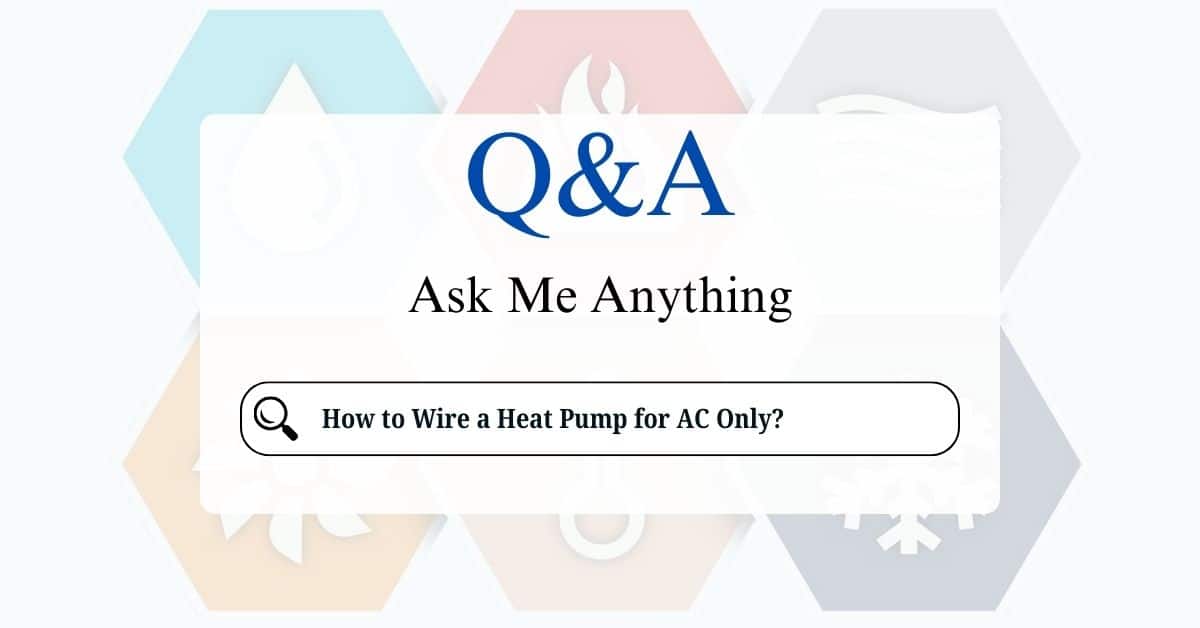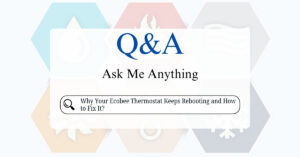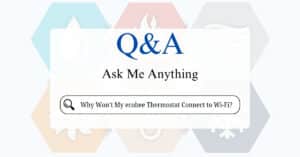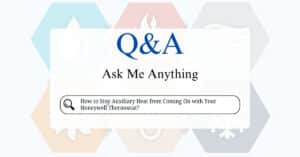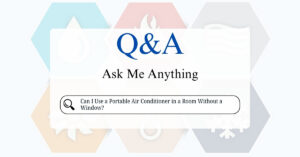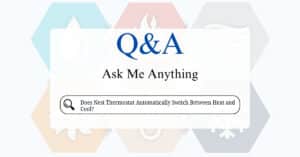If you want to configure a heat pump to operate in AC-only mode, you can bypass or disable the heating function and wire it solely for cooling. This may be useful if the heating function is no longer required or the system is being used in a climate where heating isn’t needed.
In a standard heat pump setup, the thermostat sends signals to the heat pump control board, which then activates the appropriate components (compressor, reversing valve, fan motors) depending on the desired mode (heating or cooling).
Warning: HVAC wiring involves handling electrical components, which can be dangerous. Consult an HVAC professional if you’re unsure or inexperienced. Always turn off the power before working on the system.
If you have a legitimate reason for needing AC-only operation (such as a temporary heating system failure), the correct action is to do:
1. Understand the Heat Pump’s Wiring System
Most heat pumps are wired to operate in both heating and cooling modes, controlled by a thermostat. Standard wire designations include:
- R: Power (red wire, 24V supply)
- Y: Compressor (cooling)
- G: Fan control
- O/B: Reversing valve (switches between heating and cooling modes)
- C: Common wire (blue wire, continuous 24V power)
- W: Auxiliary or emergency heat
To configure the heat pump for cooling-only operation, you need to ensure the reversing valve remains in the cooling position and disconnect any wires associated with heating.
2. Turn Off Power to the System
- Shut off power to the heat pump at the circuit breaker.
- Verify the power is off using a voltage tester.
3. Open the Thermostat
- Remove the thermostat cover to expose the wiring terminals.
- Take a picture or label the wires to keep track of their original positions.
4. Disconnect Heating Wires
- Disable Heating:
- Disconnect the W wire (auxiliary/emergency heat) from the thermostat terminal.
- Cap or insulate the W wire with a wire nut to prevent accidental contact.
- Set the Reversing Valve for Cooling:
- Determine if your system uses O or B for the reversing valve. O energizes the reversing valve for cooling (most common) and B energizes the reversing valve for heating.
- Ensure the O wire is connected to keep the system in cooling mode. If your system uses B, leave it disconnected.
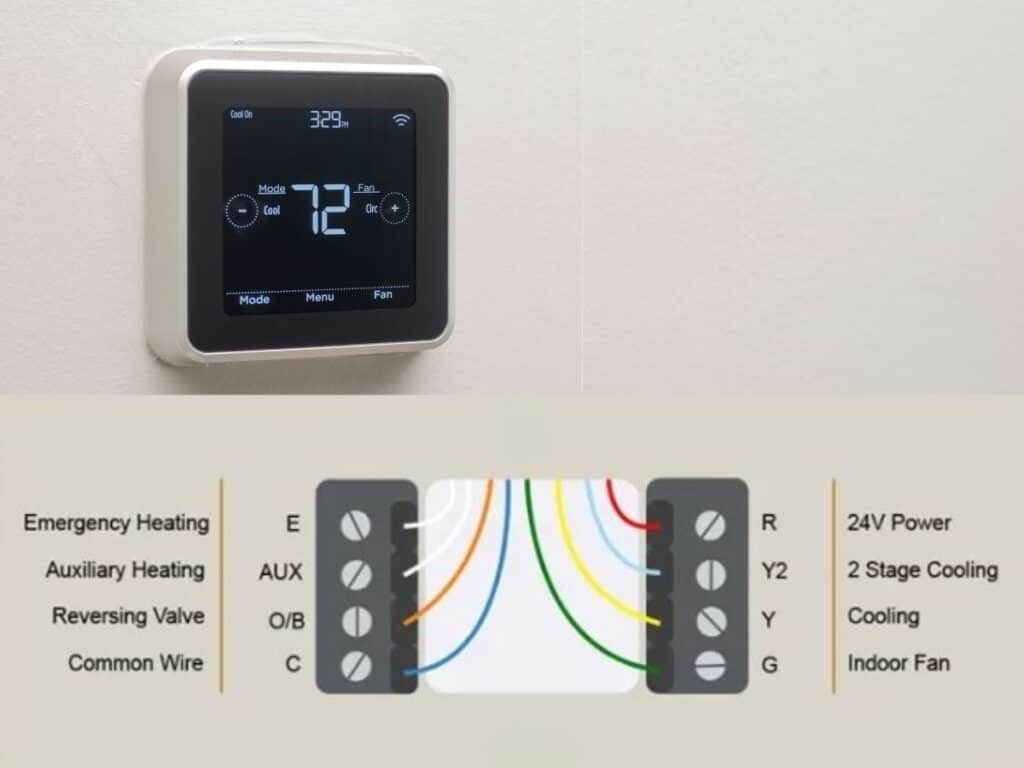
5. Verify Cooling Connections
- Ensure the following essential wires are correctly connected:
- R (power)
- Y (compressor)
- G (fan)
- C (common, if applicable)
- O (for cooling mode, if your system uses O).
6. Test the System
- Restore power to the heat pump.
- Set the thermostat to “Cool” mode and lower the temperature to activate the cooling function.
- Check that the system operates correctly:
- The compressor and outdoor fan should run.
- Cool air should blow from the indoor vents.
- Verify that the heating function is disabled.
Example Heat Pump Wiring Configuration for AC-Only Mode
Heat pump wiring is complex and involves several wires and components. Here’s a simplified overview of the wiring related to heating and cooling:
- R Wire (Power): This is the power wire, typically red.
- Y Wire (Compressor/Cooling): This wire controls the compressor, which is essential for both heating and cooling.
- W Wire (Auxiliary/Emergency Heat): This wire controls the auxiliary or emergency electric resistance heating elements, used for supplemental heat in cold weather.
- O Wire (Reversing Valve): This wire controls the reversing valve, which switches the refrigerant flow between heating and cooling modes.
| Terminal | Purpose | Wire |
|---|---|---|
| R | Power (24V) | Red |
| Y | Compressor (cooling) | Yellow |
| G | Fan control | Green |
| C | Common (if needed) | Blue |
| O | Reversing valve | Orange |
Why Disable the Heating Function?
- Temporary Solution During Heating System Repair: If your primary heating system fails and you have a heat pump, you might temporarily wire it for AC-only to provide some cooling while the heating system is being repaired.
- Specific Climate Considerations (Extremely Rare): In very rare cases, in climates with extremely mild winters where heating is almost never needed, AC-only operation might be considered. However, even in these cases, the small additional cost of a heat pump over a standard AC unit is usually worthwhile for the occasional heating needs or resale value.
When to Call a Professional
- If the system doesn’t function correctly after rewiring.
- If you encounter issues with the thermostat, wiring, or electrical components.
- For proper safety and compliance with local codes.
By following these steps, you can safely wire a heat pump for cooling-only operation. Always ensure proper insulation and secure connections to avoid electrical hazards. If you’re uncertain, consult an HVAC professional.
